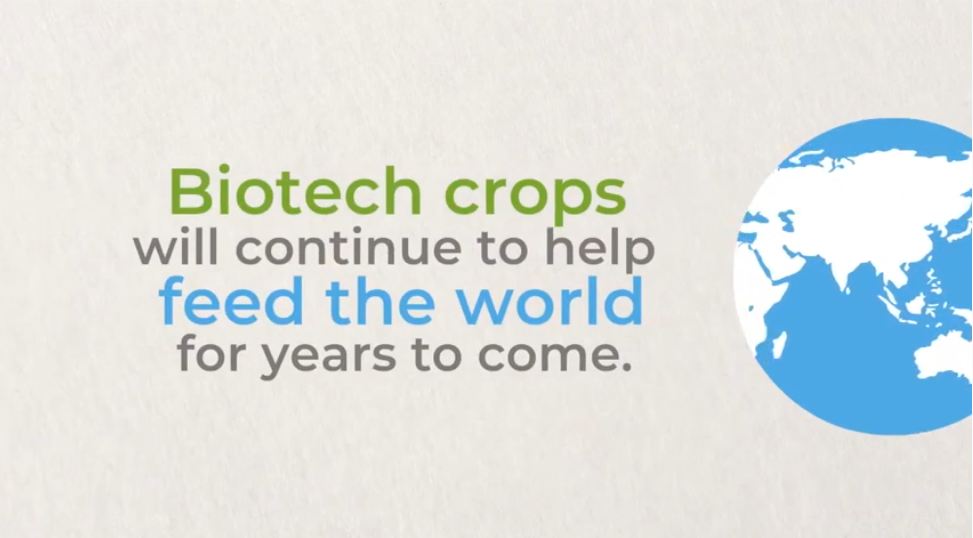
GM Crop Planting Increased ~113-fold Since 1996
September 11, 2019| |
GM crops were first planted in 1996, with an initial global area of 1.7 million hectares. After 23 years, plantings increased by ~113-fold, reaching an accumulated biotech area of 2.5 billion hectares. This makes biotech crops the fastest adopted crop technology in recent times, according to the latest video about the Highlights of ISAAA Brief 54: Global Status of Commercialized Biotech/GM Crops in 2018. With 23 years of documented adoption, biotech crops have long history of safety and benefits.
In recent years, biotech has expanded beyond the four major crops, maize, soybeans, cotton, and canola. These new biotech crops include alfalfa, sugar beets, papaya, squash, eggplant, potatoes, and apples. Two generations of potatoes have been released, which are non-bruising, non-browning, with reduced acrylamide, and late blight resistant. Non-browning apples were also planted in the USA. In 2018, Brazil planted the first insect resistant sugarcane, while Indonesia grew the first drought tolerant sugarcane. Australia planted the first high-oleic acid safflower for research and development and for seed propagation. These new offerings provide the producers and consumers with more product options, which were developed for their benefit.
Know more about biotech crops in 2018 from the ISAAA video.
| |
You might also like:
- ISAAA Brief 54-2018: Executive Summary
- Biotech Crops Continue to Help Meet the Challenges of Increased Population and Climate Change
- ISAAA Brief 54-2018: Infographics
Biotech Updates is a weekly newsletter of ISAAA, a not-for-profit organization. It is distributed for free to over 22,000 subscribers worldwide to inform them about the key developments in biosciences, especially in biotechnology. Your support will help us in our mission to feed the world with knowledge. You can help by donating as little as $10.
-
See more articles:
-
News from Around the World
- GM Crop Planting Increased ~113-fold Since 1996
- Burkinabe's National Biosafety Laboratory Opened
- Students Concerned about Future of Biotech Innovations in Uganda
- Discovery of Genes Could Help Reduce Fertilizer Pollution in Waterways
- Plant Enzyme Could Guide Development of Medicines and Other Products
- Half of Australians Give ‘Conditional Support' to GM foods, Study Reveals
- Utrecht Biologists Discover A Way to Make Plants Flood Tolerant
-
Research Highlights
- First Pea Genome to Help Improve Future Crops
- Scientists Investigate Grapevine's Population Genetics Using Structural Variants
-
Plant
- Use of CRISPR-Cas9 Revealed OsCAF1 Influences Chloroplast Development in Rice
-
Read the latest: - Biotech Updates (December 17, 2025)
- Gene Editing Supplement (December 17, 2025)
- Gene Drive Supplement (February 22, 2023)
-
Subscribe to BU: - Share
- Tweet

